



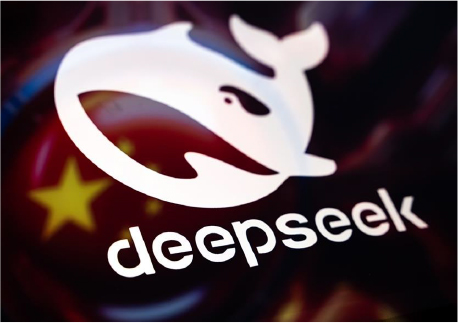
DeepSeek’s emergence has disrupted the US-China AI race, demonstrating that algorithmic efficiency can rival hardware dominance. Their advanced, cost-efficient models, like the R1, challenge the perceived US lead and raise concerns about export control effectiveness. While initial claims of minimal investment were false, DeepSeek’s achievement is undeniable. However, their open-source approach creates security risks, with data privacy concerns leading to international bans. Moreover, accessible technology increases the threat of cyber warfare and crime. Paradoxically, US export controls may have accelerated Chinese AI progress by incentivizing innovation and efficiency, creating a more competitive and insecure landscape.
2025 has already been a turbulent year for artificial intelligence, with rapid advancements and major financial shifts. On January 19, China unveiled a national AI investment fund, widely seen as a response to tightened U.S. chip export controls. Just days later, Chinese AI startup DeepSeek sent shockwaves through the market with its low-cost, minimal-chip, open-source model featuring advanced reasoning capabilities. The revelation that DeepSeek posed a credible challenge to U.S.-based OpenAI rival o3 triggered market turmoil, wiping out $600 billion from NVIDIA’s valuation when markets opened on January 27. This disruption has reignited debates over who holds the power to develop cutting-edge AI and raised doubts about the effectiveness of U.S. restrictions on Chinese access to semiconductor technology.
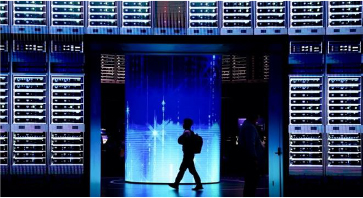
DeepSeek’s rise has sparked growing concerns in Washington that America’s most advanced AI companies may struggle to compete with China’s lower-cost alternatives. If these fears materialize, China would gain a significant advantage in shaping AI-driven narratives, potentially deploying models designed to reinforce state censorship, suppress dissent, and rewrite historical events. As AI systems grow more powerful, they could reshape the global balance of power in ways not yet fully understood: the country that dominates AI innovation and adoption will wield enormous influence over the global economy, national security, and geopolitical affairs.
A common saying in tech circles is that the U.S. excels at innovation – going from zero to one – while China dominates commercialization, scaling from one to 100. For years, this seemed true in artificial intelligence, with U.S. startups like OpenAI leading the way in cutting-edge research, widely believed to be two to three years ahead of their Chinese rivals. However, the rapid release of two powerful models by DeepSeek at a fraction of the cost for OpenAI-style models is challenging this assumption, triggering a historic sell-off in U.S. tech stocks. DeepSeek’s R1 reasoning model matches (and sometimes beats) OpenAI’s O1 across a range of math, code, and reasoning tasks and thus reshapes the global AI race and represents a ‘Sputnik moment’ for the AI industry.
DeepSeek initially claimed to have trained its advanced R1 model using just $6 million and 2,048 GPUs. However, researchers do not believe these claims represent reality. Their findings suggest that DeepSeek has actually invested $1.6 billion in hardware, including a fleet of 50,000 Nvidia Hopper GPUs – far surpassing its publicly stated figures.
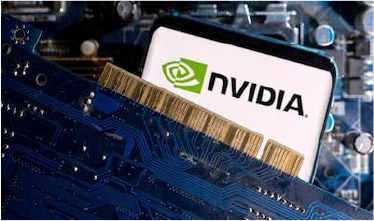
U.S. officials are thus looking into whether the firm had obtained advanced Nvidia graphics processing unit (GPU) chips that are subject to tight U.S. export controls. Early reports suggest that DeepSeek used intermediaries based in Singapore to obtain the Nvidia GPUs, bypassing the export controls that should have been the “moat”, slowing Chinese competition to the cutting-edge US AI companies due to its potential for use in advanced weaponry.
DeepSeek’s success has also cast doubt on the effectiveness of President Biden’s export restrictions, which were designed to block China’s access to cutting-edge AI chips and the tools needed to manufacture them. These measures aim to cripple Beijing’s semiconductor industry and limit its ability to develop AI technologies that could provide a military advantage.
Just days before leaving office, Biden introduced the Framework for Artificial Intelligence Diffusion, a policy that not only tightens restrictions on the sale of advanced chips to adversary nations like China but also limits their acquisition by several other countries.
While DeepSeek has gained recognition for its cutting-edge AI models, including R1 and the DeepSeek-V3 Mixture-of-Experts (MoE) model, researchers think the company’s claims of minimal hardware usage may have significantly downplayed the scale of its operations.
Estimates believe DeepSeek is running as many as 50,000 GPUs, across multiple data centers, serving as the foundation for its AI training, research, and development efforts. This includes 10,000 H800s and 10,000 H100s, with additional purchases of H20 units from Nvidia. In total, DeepSeek’s server-related capital investments are estimated at $1.6 billion, with an additional $944 million allocated for operational expenses.
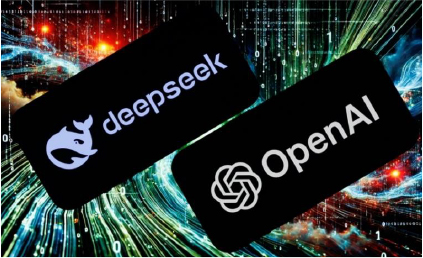
That is indeed a very far cry from the misleading claims of the cost of $6 million; moreover, the model is largely built on the work done by Western companies, with the ChatGPT maker OpenAI alleging that DeepSeek might have stolen data from them through a process called “distillation”, involving outputs from a large, pre-trained model to train another smaller model.
That said, DeepSeek has indeed largely perfected the algorithm efficiency – and thus showed that algorithmic innovations can overcome scaling laws. The Chinese company employed innovative software optimization techniques, from sparse MoE architectures to quantization, which allowed them to reach unprecedented cost efficiency while outperforming competing models.
The gap between China’s AI labs and their U.S. counterparts has narrowed significantly, with the industry advancing at an astonishing pace since OpenAI’s late 2022 release of GPT-3, the model that ignited the modern AI race. Until recently, U.S. policymakers and business leaders widely assumed that the United States maintained a multi-year lead over China in AI – a notion that now appears increasingly outdated.
The intensifying AI rivalry between the U.S. and China has captured the attention of both industry leaders and policymakers. DeepSeek’s CEO, Liang Wenfeng, was recently spotted in a high-profile meeting with Chinese Premier Li Qiang, standing as the sole AI industry representative in the room. Just a week after the release of DeepSeek’s R1 model, the Bank of China announced a sweeping “AI Industry Development Action Plan,” pledging at least 1 trillion yuan ($137 billion) over the next five years to accelerate AI infrastructure, robotics, and even low-earth orbit economy projects.
This latest initiative is just one of many that China has pursued in its long-term push for AI supremacy. In 2017, the Chinese State Council launched the “New Generation AI Development Plan,” a strategic roadmap to establish China as the global leader in AI by 2030. This blueprint set key milestones to bolster AI research, infrastructure, and industrial integration by 2025. Since then, Beijing has introduced more than 40 regulatory and policy initiatives, from AI safety governance to industry standards.
Notable recent efforts include the AI Capacity-Building Action Plan and the AI Safety and Governance Framework 1.0, both introduced in September 2024, as well as the AI Industry Standards System Guidance, published in July 2024. While these policies signal China’s commitment to AI, the government has largely taken on a guiding and regulatory role rather than directly funding AI companies. This approach contrasts with its heavy investments in semiconductors, electric vehicles, and solar energy, where state intervention has played a far more active role in shaping industry growth.
By restricting China’s access to high-end computing power, U.S. export controls may have unintentionally sped up China’s AI adoption by forcing a shift toward efficiency and optimization. This approach aligns seamlessly with China’s emphasis on scalable, cost-effective AI deployment, where practical application often outweighs cutting-edge performance. As a result, China is developing AI models designed to run efficiently on lower-end hardware, which could give it a key advantage in integrating AI into everyday life and expanding its use across industries.
Investigations revealed that DeepSeek’s chatbot contained code capable of transferring user login data to China Mobile, a state-owned telecom company banned from U.S. operations, raising significant national security concerns. Meanwhile, the South Korean data protection regulator told Yonhap News Agency it has confirmed DeepSeek communicating with ByteDance, the social media company owning TikTok, which is tightly controlled by the Chinese communist party. It appears that Seoul has now joined the ranks of countries that have already removed DeepSeek from app stores over data protection concerns.
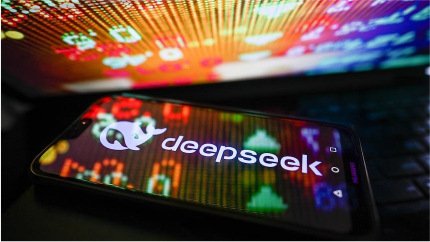
Concerns over DeepSeek’s data practices are mounting across Western nations, with both European regulators and U.S. state governments taking decisive action. In Italy, the data protection authority Garante has implemented a nationwide block on DeepSeek after the company’s inadequate response to privacy concerns. The situation has drawn attention from other European privacy watchdogs, with French and Irish regulators also launching inquiries into DeepSeek’s data handling practices.
Meanwhile, in the United States, Texas has issued a comprehensive ban on several China-based AI and social media platforms, including DeepSeek, RedNote, Lemon8, Moomoo, and several others, building upon the state’s 2022 TikTok ban. The prohibition affects both government-issued and personal devices used by state employees and contractors, with Abbott citing concerns about potential Chinese Communist Party surveillance operations. The U.S. Navy banned the use of DeepSeek’s AI app among its members for the same reasons, fearing potential exploitation of sensitive data by the Chinese government.
These parallel actions highlight growing international apprehension about data security and privacy risks associated with Chinese technology companies, particularly in government and regulatory contexts. The fact that the Chinese government prefers to exit the US market rather than cede operational oversight to US-owned entities for TikTok for example suggests the CCP has a hidden agenda and that the Chinese intelligence services regularly access users’ data, as required by Chinese law.
The DeepSeek case highlights a core paradox of U.S. export controls: measures intended to hinder technological progress in rival nations have instead spurred alternative innovation pathways, creating a competitive landscape where the U.S. no longer holds a clear advantage. While these restrictions have posed short-term challenges, they have also pushed companies like DeepSeek to develop new approaches, leading to more accessible AI solutions that directly challenge U.S. technological dominance.
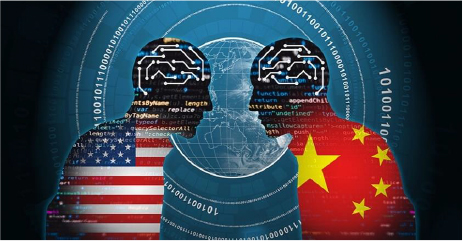
Chinese LLM developers are likely to rapidly refine DeepSeek’s innovations and deploy them at a speed that presents a formidable challenge to U.S. companies – but the risks extend far beyond competition.
DeepSeek’s success is set to reshape China’s AI landscape, with its open-source model providing invaluable technical insights. This accessibility enables both state-sponsored hackers and independent cybercriminals to leverage and enhance its cutting-edge advancements using their extensive resources.
As a result, DeepSeek is poised to escalate the already critical threats of state-backed cyber warfare and the growing cybercrime-as-a-service industry. It is highly likely to accelerate the democratization of cyber attacks, making sophisticated hacking tools more accessible to inexperienced actors. This shift will fundamentally expand the scale and complexity of digital threats, forcing businesses and governments worldwide to adapt to an increasingly hostile cyber environment.
DeepSeek’s emergence as a significant player in the AI arena presents the threat landscape with a concerning picture. While the company’s advancements in algorithmic efficiency and cost-effective AI development are undeniable, they also expose the limitations and unintended consequences of U.S. export controls. Rather than hindering China’s progress, these restrictions appear to have catalyzed innovation and a focus on practical AI deployment, potentially giving China a competitive edge in certain sectors. Moreover, the allegations of data theft, coupled with DeepSeek’s connections to state-owned and communist party-controlled entities and documented security vulnerabilities, raise serious national security and privacy concerns. The potential for these technologies to be weaponized in cyber warfare and exploited by malicious actors further amplifies these risks.